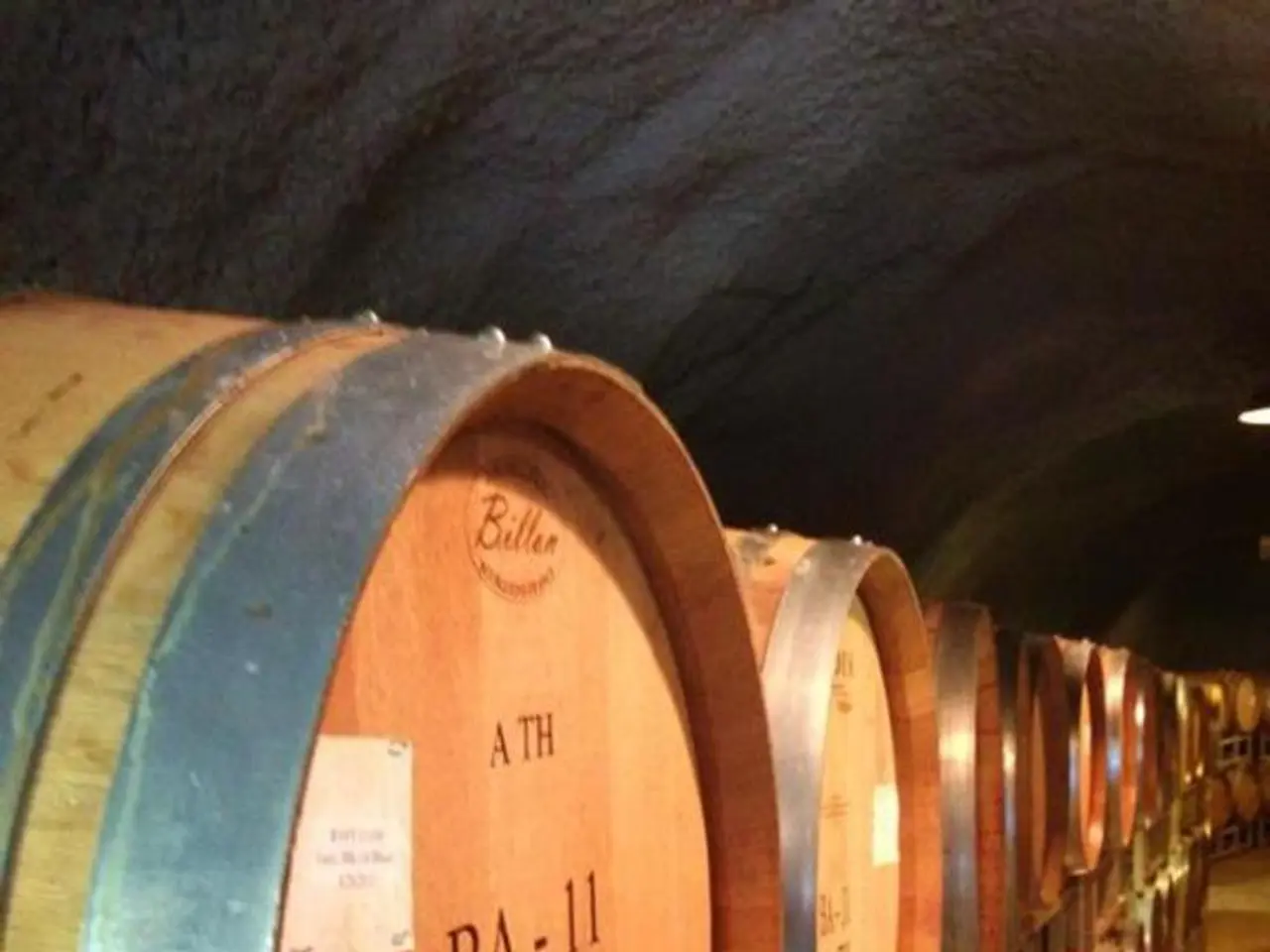Oil Production in Kazakhstan Discussed in Foreign Press, along with Middle Corridor Matters and Other Topics
The Middle Corridor, a trade route spanning over 4,250 km of railway and 500 km of seaway, is rapidly gaining strategic importance. This corridor, also known as the Trans-Caspian International Transit Route (TITR), connects China, Central Asia (with Kazakhstan as a key hub), the Caspian Sea, the Caucasus, and Europe, bypassing bottlenecks dominated by Russia and China [1].
Since the launch of the Baku-Tbilisi-Kars railway in 2017, the Middle Corridor has become a viable transit route, enabling rail freight from China to Turkey in approximately 12 days and to Prague in 18 days [1]. In 2024, traffic on the Middle Corridor grew substantially, with cargo reaching 4.5 million tonnes (a 62% increase), and container transport rising by 170%, moving 56,500 TEUs, with a significant portion on the China-Europe segment [1].
Infrastructure investments are ongoing, including the expansion of the Port of Baku, rail modernizations in Kazakhstan, Azerbaijan, and Georgia, and the development of new intermodal hubs, improving capacity and reliability [4]. The corridor integrates different transport modes—rail, maritime (Ro-Ro and feeder services across the Caspian and Black Seas), and road—offering flexibility and reduced transit times (China to Europe typically about 25 days) [4].
The United States and Western companies are increasingly engaging with the Middle Corridor, recognising its role in diversifying supply chains and reducing dependency on China and Russia. A US business delegation is planned for September 2025 to explore opportunities in trade, energy, infrastructure, and logistics along the corridor [3].
For Kazakhstan, the Middle Corridor positions the country as a critical Eurasian logistics hub, enhancing its geopolitical and economic influence. The country's wealth of rare earth elements and critical minerals aligns well with increasing Western demand for secure supply chains related to energy transition technologies [2]. The route's development supports the diversification of global supply chains, increasing resilience amid political and pandemic-related disruptions [3].
However, environmental factors threaten the corridor's viability. Climate change impacts in Central Asia, particularly rising temperatures and declining water reserves, affect the Caspian Sea's water levels, complicating maritime transport logistics and port operations [2]. Water-intensive industries like mining, which are central to Kazakhstan's exports, must balance resource demands with environmental constraints and population needs [2].
The Middle Corridor was the focus of a high-level roundtable held at the UK Parliament on July 2, titled Middle Corridor: Strategic Investment and Cooperation Opportunities [5]. Kazakh President Kassym-Jomart Tokayev emphasised at the Astana International Forum that Central Asia is warming twice as fast as the global average, making climate resilience a central component of sustainable development [6].
India is investing in the TITR as a strategic move to bypass China's Belt and Road Initiative (BRI) and secure faster, cheaper access to Europe and beyond [7]. The EU has expressed its willingness to allocate €10 billion (approximately US$11.5 billion) for modernising infrastructure along the TITR [8].
Chinese President Xi Jinping participated in a China-Central Asia summit in Kazakhstan, underscoring China's high priority on Central Asia and reinforcing the treaty of permanent good-neighbourliness and friendly cooperation between the six countries [9]. The European External Action Service (EEAS) and the EU Delegation to Astana held a meeting in Kazakhstan with Deputy Foreign Minister Roman Vassilenko representing the Kazakh side [10].
In a significant move, FlyArystan, the Kazakh low-cost airline, launched an international route from Almaty to Issyk-Kul International Airport (Tamchy) in the Kyrgyz Republic [11]. Kazakhstan is also pursuing a project with Chinese firm Hunan Junxin Environmental Protection to build three waste-to-energy plants, with a total investment of $600 million [12].
Under President Tokayev, Kazakhstan continues to pursue a balanced, multi-vector foreign policy, open to deeper ties with the West, including through the C5+1 framework [13]. Central Asia is a resource-rich region with strategic economic importance, with Kazakhstan holding some of the world's largest reserves of critical minerals [14].
References: [1] The Diplomat. (2021). The Middle Corridor: A Strategic Alternative to China's Belt and Road Initiative. https://thediplomat.com/2021/02/the-middle-corridor-a-strategic-alternative-to-chinas-belt-and-road-initiative/ [2] The National Interest. (2021). The Middle Corridor: A Strategic Opportunity for the United States. https://nationalinterest.org/feature/the-middle-corridor-a-strategic-opportunity-for-the-united-states-170818 [3] The Diplomat. (2021). US Business Delegation to Explore Opportunities Along the Middle Corridor. https://thediplomat.com/2021/07/us-business-delegation-to-explore-opportunities-along-the-middle-corridor/ [4] The Diplomat. (2021). The Middle Corridor's Potential as a Strategic Trade Route. https://thediplomat.com/2021/07/the-middle-corridors-potential-as-a-strategic-trade-route/ [5] The Diplomat. (2022). Middle Corridor: Strategic Investment and Cooperation Opportunities Discussed at UK Parliament Roundtable. https://thediplomat.com/2022/07/middle-corridor-strategic-investment-and-cooperation-opportunities-discussed-at-uk-parliament-roundtable/ [6] The Astana Times. (2022). President Tokayev Emphasizes Climate Resilience at Astana International Forum. https://astanatimes.com/2022/06/president-tokayev-emphasizes-climate-resilience-at-astana-international-forum/ [7] The Diplomat. (2022). India Invests in Middle Corridor as Alternative to China's BRI. https://thediplomat.com/2022/06/india-invests-in-middle-corridor-as-alternative-to-chinas-bri/ [8] The Diplomat. (2022). EU Commits €10 Billion for Middle Corridor Infrastructure Modernisation. https://thediplomat.com/2022/06/eu-commits-e10-billion-for-middle-corridor-infrastructure-modernisation/ [9] The Diplomat. (2022). Xi Jinping Reinforces China's Priority on Central Asia at Kazakhstan Summit. https://thediplomat.com/2022/06/xi-jinping-reinforces-chinas-priority-on-central-asia-at-kazakhstan-summit/ [10] The Diplomat. (2022). EEAS and EU Delegation Meet with Kazakh Deputy Foreign Minister. https://thediplomat.com/2022/06/eeas-and-eu-delegation-meet-with-kazakh-deputy-foreign-minister/ [11] The Astana Times. (2022). FlyArystan Launches International Route to Kyrgyzstan. https://astanatimes.com/2022/06/flyarystan-launches-international-route-to-kyrgyzstan/ [12] The Astana Times. (2022). Kazakhstan and Chinese Firm to Build Waste-to-Energy Plants. https://astanatimes.com/2022/06/kazakhstan-and-chinese-firm-to-build-waste-to-energy-plants/ [13] The Astana Times. (2022). Kazakhstan Pursues Balanced Foreign Policy under President Tokayev. https://astanatimes.com/2022/06/kazakhstan-pursues-balanced-foreign-policy-under-president-tokayev/ [14] The Astana Times. (2022). Central Asia: A Resource-Rich Region with Strategic Economic Importance. https://astanatimes.com/2022/06/central-asia-a-resource-rich-region-with-strategic-economic-importance/
During the 2025 US business delegation visit, discussions about trade, energy, infrastructure, and logistics along the Middle Corridor acknowledged the route's potential for diversifying supply chains, particularly in reducing dependency on China and Russia. Moreover, the growing traffic on the Middle Corridor, including the rising container transport, necessitates attention to environmental factors such as climate change impacts affecting maritime transport in Central Asia.





